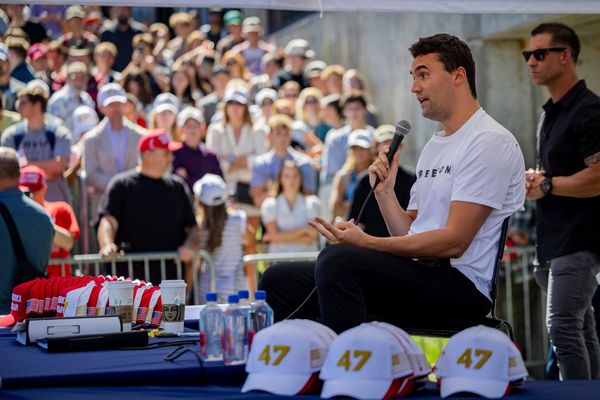
From marmalade sandwiches and beribboned beehives to black stilettos and military uniforms, national mourning and preparations for a state funeral have transformed the British landscape.
This week’s extraordinary images – of polished pageantry juxtaposed with piles of stuffed corgis, of five-mile queues and the first sightings of a dramatically reshuffled royal family – reflect a nation’s grief for the late Queen and the complexities of how monarchy fits into modern Britain.
The lions of the royal standard flag – a trio of gold lions for England; the lion rampant for Scotland – have blazed proudly from the royal coffin on its long journey from Balmoral to Westminster Hall.
And their supporting cast of scarlet Beefeaters and purple-robed archbishops, of kilted Scottish pallbearers and the plumed gold helmets of the Household Cavalry, have painted a picture of British tradition in full and sombre voice.
The pageantry of this week has been a striking reminder that a monarchy that many Britons had come to conflate with the character of one particular woman is, in fact, an ornate, complex and expensive operation that transcends any personal character.
The idea of the monarch as an institution apart from the individual has historically served as a source of stability, but with modern-day preference for heart-on-sleeve public shows of affection, it can also be an achilles heel.
Twenty-five years ago, television pictures of William and Harry walking in stoic procession behind a casket that carried a white floral tribute with a card addressed to “Mummy” became a defining image of the death of Diana, Princess of Wales.
That image was a visual metonym for what the public perceived as the chilly dysfunction of the royal family. In 2021, the sight of the Queen sitting alone at Prince Philip’s funeral became a symbol not only of her personal grief, but of a shared national trauma of lockdown.
The crown was given to King Charles the moment his mother died, but the bonds of affection and respect from the British public are not so automatically passed from mother to son, and the reaffirming of this relationship is one purpose of this week’s pageantry.
A walkabout by the “Fab Four”, when the Cambridge and Sussex couples made a joint visit to view tributes at Windsor Castle, gave the watching world the good news story that, the royal family will hope, can ensure that grief for the Queen is channelled into support and affection for the newly reconfigured royal family.
As 15- and 12-year-olds walking behind their mother’s coffin, the brothers once shared a heavy burden of private tragedy and public duty. If they are seen to present a united front this week, that will be seen as a fitting tribute to a beloved matriarch – and the first step toward showing the era of King Charles in a positive light.







